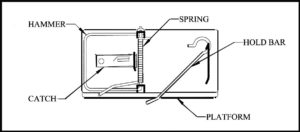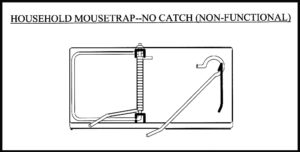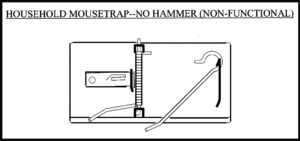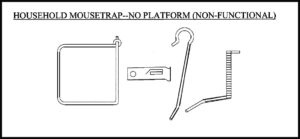THE CREATION IS ENGINEERED – NOT EVOLVED!
One of the specialties of mechanical engineers is designing and making machinery. At university level a requirement for developing this ability is “Machine Design” courses.
In order to design and manufacture machines, engineers must learn to apply what man has learned about the way things work in the universe. Due to the fact that God has created the universe to operate according to laws that normally don’t deviate from time to time or place to place, men can use science to guide the development of his inventions. Another way to say this is to say that the universe always has uniformity, except when God chooses to invoke miracles.
Within the art and science of machine design are engineering subset categories such as statics, dynamics, kinematics, strength of materials, thermodynamics, electricity etc. that must be mastered in order to be successful. These subsets are all derived from basic science studies such as physics, chemistry and mathematics. These are the tools the mechanical engineer uses to make machines. To understand and use these tools obviously requires intelligence. That is, machines don’t design themselves.
Some of the machines like those I have had a part in designing over my career are shown in Figure 1 below.
Figure 1
All of these machines are irreducibly complex, to use the terminology devised by biochemist Michael Behe in his 1996 book, Darwin’s Black Box. A machine that is irreducibly complex has numerous parts that not only must be precisely made, but are required in the right orientation and relative location in order for the machine to work as designed. There are many parts that if made incorrectly or not installed in the machine will result in an inoperable machine.
Behe used the example of a simple mousetrap to explain the idea of irreducible complexity. In Figure 2 is a depiction of a household mousetrap.
If we disregard all the complexities of the manufacture of each of the parts, then this mousetrap is a simple device consisting of just five parts. The parts are the platform, hammer, spring, catch and hold bar. All that is needed to prepare this device for its intended function is to set the trap and load it with some bait.
However, if any one of the five parts is taken away, then the device becomes useless for its purpose. This can be easily seen in Figures 3, 4, 5, 6, and 7.
The mousetrap is irreducibly complex, and this demonstrates the futility of the idea of Darwinian evolution since it requires the slow transformation of simpler parts into more complex parts.
As we learn more about life, the similarity of living cells to complex machinery is becoming more and more obvious. Over the past decades we have found that the microscopic parts of each cell are made like irreducibly complex machines. Even tiny, extremely complex, motorized germs have been discovered. Behe pointed out that at the time of Darwin the fact of the complexity of life was unknown, and the irreducible complexity of cells was invisible. Darwin thought that the cell was filled with a sort of homogeneous protoplasm.
It makes logical sense that if machines made by man require intelligent engineers, then living cells also could only have been produced by an intelligent Engineer. I submit to you that the Engineer is the God of the Bible.
J.D. Mitchell, P.E.

 Figure 2
Figure 2 Figure 3
Figure 3 Figure 4
Figure 4 Figure 5
Figure 5 Figure 6
Figure 6 Figure 7
Figure 7

